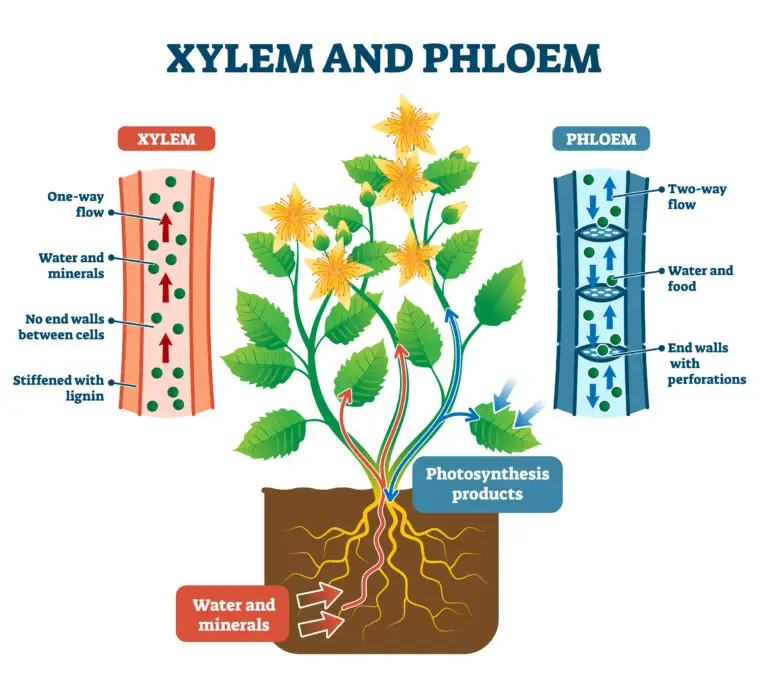Vascular Bundle

Table of Contents
What is a Vascular Bundle?
A vascular bundle is a part of the transport system in plants, specifically in the stems and leaves. It is a cluster of specialized tissues that work together to transport fluids, nutrients, and other substances throughout the plant. Vascular bundles are a critical component of the plant’s vascular tissue, which consists of the xylem and phloem.
Vascular Bundle Overview
Xylem
The xylem is a tissue that transports water and minerals from the roots to the rest of the plant. It comprises various cell types, including vessel elements, tracheids, fibers, and parenchyma cells. Vascular bundles typically have a xylem located toward the center or inner side.
Phloem
The phloem is another vascular tissue that transports organic compounds, such as sugars produced during photosynthesis, from the leaves to other parts of the plant. Phloem consists of sieve tube elements, companion cells, fibers, and parenchyma cells. In vascular bundles, phloem is often located on the outer side.
Cambium
The cambium is a layer of meristematic tissue that lies between the xylem and phloem. It is responsible for the lateral (secondary) growth of the vascular bundle, leading to an increase in the thickness of the stem. The cambium produces new xylem cells on its inner side and new phloem cells on its outer side.
Bundle Sheath
The bundle sheath is a protective layer of cells surrounding the vascular bundle. It provides structural support and may also play a role in regulating the exchange of substances between the vascular bundle and surrounding tissues.
Types of Vascular Bundles
Open Vascular Bundles:
- Open vascular bundles lack a complete cambium ring, and they are common in monocotyledonous plants. The xylem and phloem are scattered throughout the stem, and there is no clear distinction between them.
Closed Vascular Bundles:
- Closed vascular bundles have a complete cambium ring, and they are characteristic of dicotyledonous plants. The xylem is typically located toward the center, while the phloem is on the outer side of the bundle. The cambium allows for secondary growth, leading to an increase in stem diameter.
Function of Vascular Bundles
- Transport of Water and Nutrients: Xylem within the vascular bundle transports water and minerals absorbed by the roots to the leaves and other parts of the plant.
- Transport of Organic Compounds: Phloem within the vascular bundle transports organic compounds, primarily sugars produced during photosynthesis in the leaves, to other parts of the plant for growth and energy.
- Structural Support: The arrangement of xylem and phloem, along with the surrounding tissues, provides structural support to the plant, helping it maintain an upright position.
Related Links
Cambium
Epithelial Tissue
Photosynthesis
Xylem